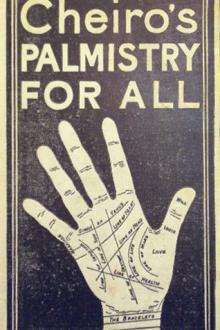The Diary - Samuel Pepys (red white and royal blue hardcover txt) 📗

- Author: Samuel Pepys
Book online «The Diary - Samuel Pepys (red white and royal blue hardcover txt) 📗». Author Samuel Pepys
Carcasse’s dismissal from office is clearly alluded to in his verses. See note 2628. ↩
Thomas Morley’s work is entitled, A Plain and Easy Introduction to Practical Music, Set Down in Form of a Dialogue Divided Into Three Parts. London, 1597, folio; other editions, 1608, 1771. ↩
The Loyal London was the ship given to the king by the City. It was launched at Deptford on June 10th, 1666. ↩
The proclamation “to apprehend George Duke of Buckingham for Treason” is dated “8 March 1666[–67]” (Bibliotheca Lindesiana: Handlist of Proclamations, vol. i, 1509–1714). ↩
Henry Jermyn, Earl of St. Albans, was appointed Envoy Extraordinary to treat for peace with France on January 25th, 1666–67. ↩
Thomas Greeting, musician, published, in 1675, The Pleasant Companion, or New Lessons and Instructions for the Flagelet. ↩
William Ashburnham, the Cofferer (see note 3129). ↩
Among the Rawlinson MSS. (Bodleian) are “Accounts with Sir W. Batten and others relating to the Flying Greyhound privateer, 1667,” A. 174. ↩
Thomas Waltham, muster-master at Plymouth, writes to the Navy Commissioners, January 11th, 1666–67, “Captain Hogg with his prize is ready to sail the first opportunity” (Calendar of State Papers, 1666–67, p. 447). ↩
Bishop Herbert Croft, who was previously Dean of Hereford (1644), was not a Romanist by birth, but entangled by the Jesuits while on his travels, and converted to Popery. It would appear, from Godwin (De Præsulibus), that his return to the Protestant faith is not attributable to Laud, but to the efforts of another prelate. “In patriam vero redux et in Thomæ Mortoni Episcopi Dunelmensis familiaritatem adductus melioribus consiliis adhibitis ad se quoque rediit et Ecclesiam Anglicanam.” Croft, says Burnet, was a devout man, but of no discretion in his conduct. He was born 1603, and survived his elevation to the see of Hereford, in 1661, thirty years. The bishop’s father, Sir Herbert, was a knight, and his son, of the same name, a baronet. See Sir Walter Scott’s preface to The Naked Truth, in Somers’ Tracts, vol. vii, p. 268. —B. ↩
William Allington, second Baron Allington, of Killard, Ireland, created an English baron, 1682, by the title of Baron Allington, of Wymondley, Hertfordshire. He died 1684, and was succeeded by his son, Giles, who died 1691, when the title became extinct. ↩
His second wife, Juliana, daughter of Baptist Noel, Viscount Campden. She died in the September following. —B. ↩
Richard Cumberland, afterwards Bishop of Peterborough. See note 189. ↩
Sir Paul Rycaut (see note 3014). ↩
Sir William Penn was at Sheerness on this day, and his “Memorandum of a Consultation held at Sheerness, March 20th, 1666–67, for the security of the said places, etc.,” is printed in Penn’s Life of Sir W. Penn, vol. ii, p. 437. ↩
Henry Gary, third Viscount Falkland, M.P., Oxford City, 1660, and Oxfordshire, 1661. Sir Henry Cary, first Viscount Falkland in the peerage of Scotland, was Lord Deputy of Ireland from 1622 to 1629. The title of the play was really The Marriage Night. It was published in 1664. The author died in the same year. ↩
There are references to the Phœnix, a Dutch ship taken as a prize, among the State Papers (see Calendar, 1666–67, p. 404). Pepys appears to have got into trouble at a later date in respect to this same ship, for among the Rawlinson MSS. (A. 170) are “Papers relating to the charge brought against him in the House of Commons in 1689 with reference to the ship Phœnix and the East India Company in 1681–86.” ↩
Sir William Walker (see note 659). ↩
Sir William Brouncker (born 1585) had been Commissary-General of the Musters in the Scotch expedition in 1639, Vice-Chamberlain to Prince Charles, and one of the gentlemen of the Privy Chamber to Charles I. He was the son of Sir Henry Brouncker, President of Munster, by Anne, sister to Henry Lord Morley, and was created Viscount Brouncker of Castlelyons, in Ireland, and Baron Brouncker of Newcastle, co. Dublin, September 12th, 1645. He died in November following at Wadham College, Oxford, and was buried in Christ Church Cathedral, leaving issue by his wife, Winifred, daughter of Sir William Leigh, of Newenham, Warwickshire, two sons, William, and Henry, third and last Viscount Brouncker, who died in 1688, and was buried in Richmond Church, leaving no issue by his wife Rebecca, widow of the Hon. Thomas Jermyn, mother, by her first husband, of Thomas, Lord Jermyn, and Henry, Lord Dover. Henry Brouncker, who had been Groom of the Bedchamber to the Duke of York, had succeeded to the office of Cofferer on the death of William Ashburnham in 1671. The Lords Brouncker were descended from Henry Brouncker, who, in 1544, bought lands at Melksham and Erlestoke, in Wilts and his arms, and those of his two wives, are described by Aubrey as being on the window of a house at Erlestoke. There are lives of the Brounckers by Mr. Sidney L. Lee in the Dictionary of National Biography. ↩
Sir Godfrey Lloyd had been a captain in Holland, and was knighted by Charles at Brussels in 1657. —B. ↩
Sir Bernard de Gomme was born at Lille in 1620. When young he served in the campaigns of Frederick Henry, Prince of Orange, and afterwards entered the service of Charles I, by whom he was knighted. Under Charles II and James II he filled





Comments (0)